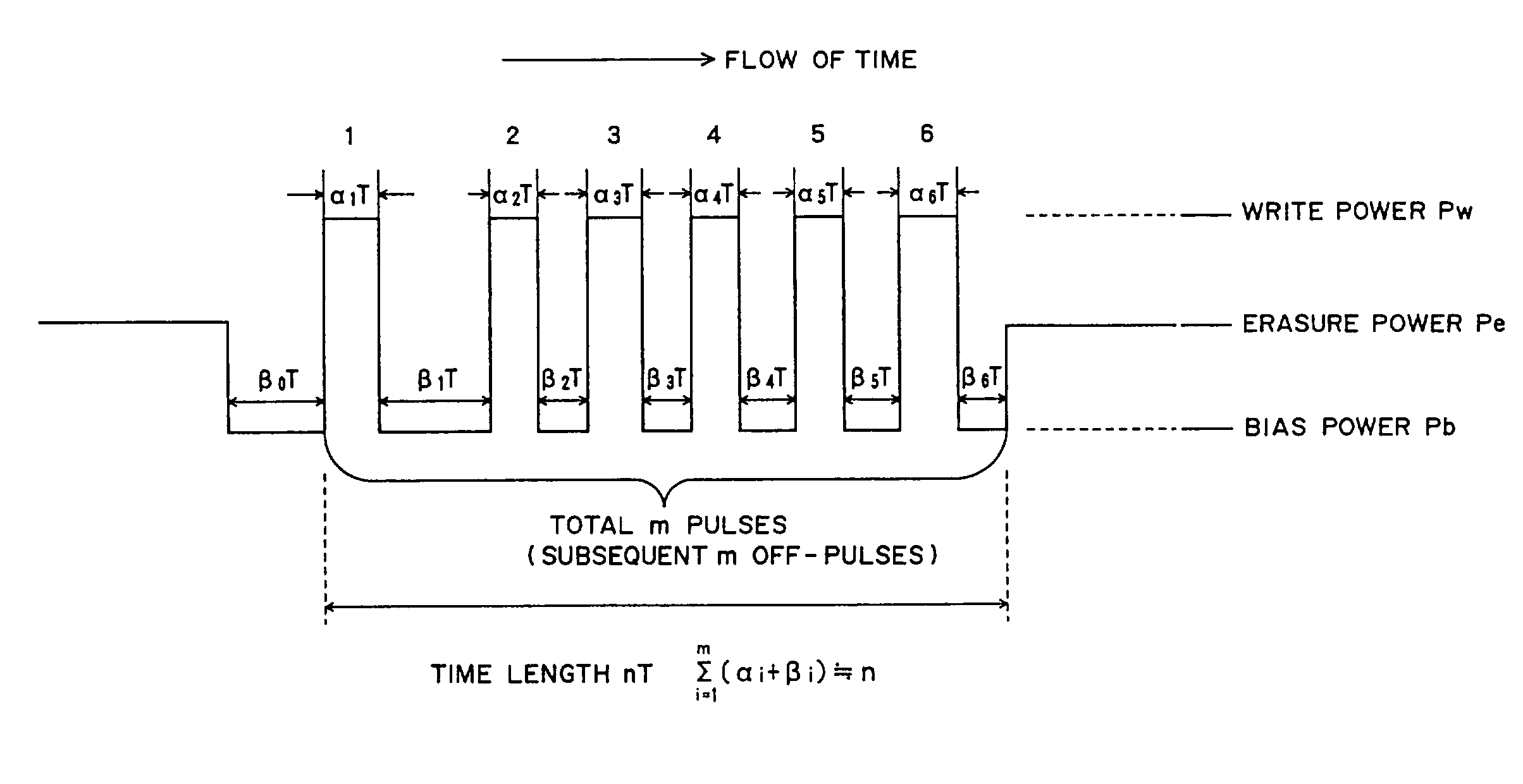Recording method for phase-change recording medium
a recording medium and phase change technology, applied in the field of phase change recording methods, can solve the problems of difficult to form amorphous marks neatly as intended, amorphous marks cannot be erased, and amorphous marks cannot be neatly formed
- Summary
- Abstract
- Description
- Claims
- Application Information
AI Technical Summary
Benefits of technology
Problems solved by technology
Method used
Image
Examples
example
[0119] A ZnS--SiO.sub.2 lower protective layer (100 nm thick), G.sub.e8Sb.sub.65Te.sub.27 recording layer (7 nm thick), and ZnS--SiO.sub.2 upper protective layer (160 nm thick) were deposited on a 0.6 mm thickness polycarbonate substrate having a guide groove(s) by sputtering, whereupon the upper protective layer was coated with a UV-curable resin protective coating. The guide groove of the substrate is 33 nm in depth, 348 nm in width, and 74 .mu.m in pitch.
[0120] Using an optical disc evaluating apparatus having an optical system which is 0.6 in NA (Numerical Aperture) and 635 nm in laser wavelength, the resulting optical disc was crystallized to initialize by irradiating DC (direct current) light whose output power is 3 mW at a 1.8 m / s linear velocity.
[0121] Subsequently the following measurement was carried out. All signals were recorded in the guide groove.
[0122] First of all, the erasure ratio indicating a ratio of reinstating crystalline from amorphous was measured under the f...
PUM
| Property | Measurement | Unit |
|---|---|---|
| thickness | aaaaa | aaaaa |
| write power Pw | aaaaa | aaaaa |
| write power Pw | aaaaa | aaaaa |
Abstract
Description
Claims
Application Information
 Login to View More
Login to View More - R&D
- Intellectual Property
- Life Sciences
- Materials
- Tech Scout
- Unparalleled Data Quality
- Higher Quality Content
- 60% Fewer Hallucinations
Browse by: Latest US Patents, China's latest patents, Technical Efficacy Thesaurus, Application Domain, Technology Topic, Popular Technical Reports.
© 2025 PatSnap. All rights reserved.Legal|Privacy policy|Modern Slavery Act Transparency Statement|Sitemap|About US| Contact US: help@patsnap.com



